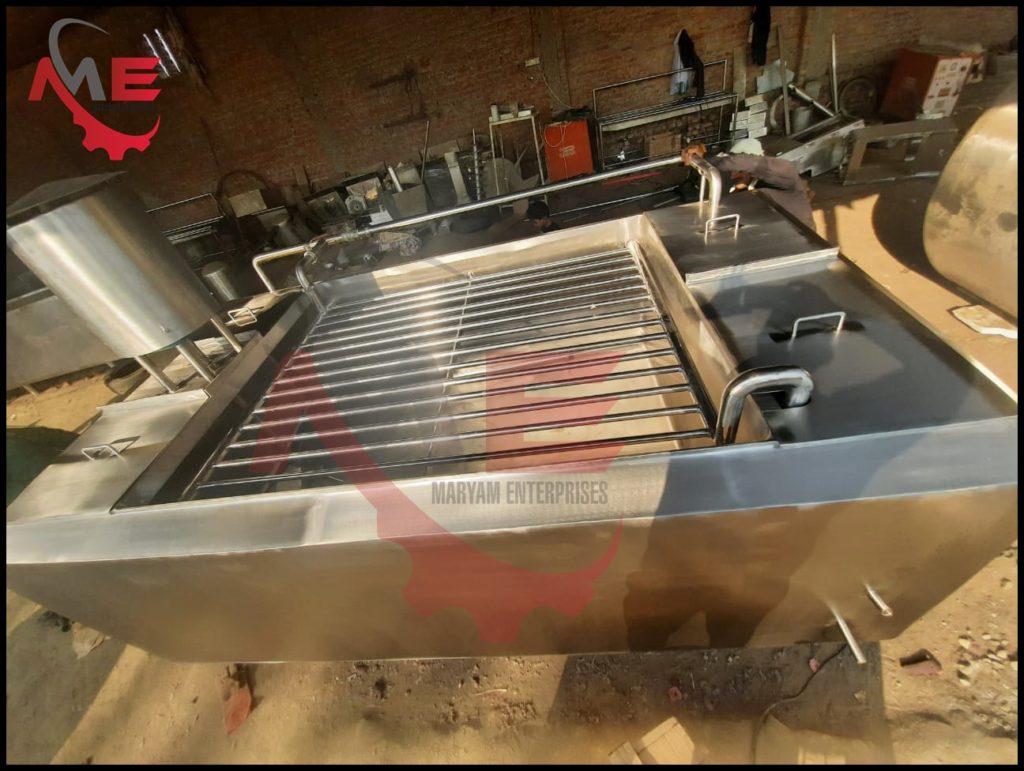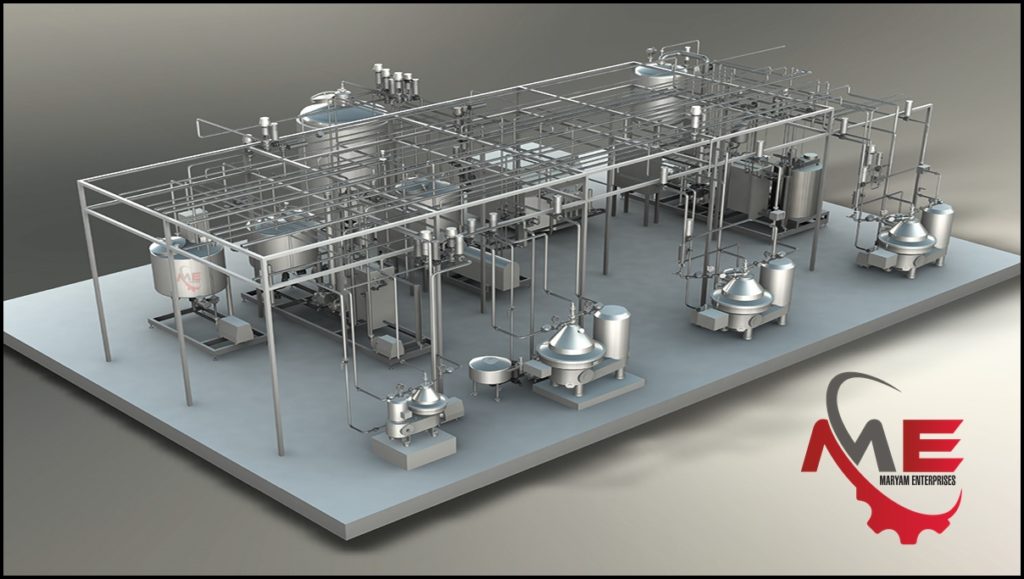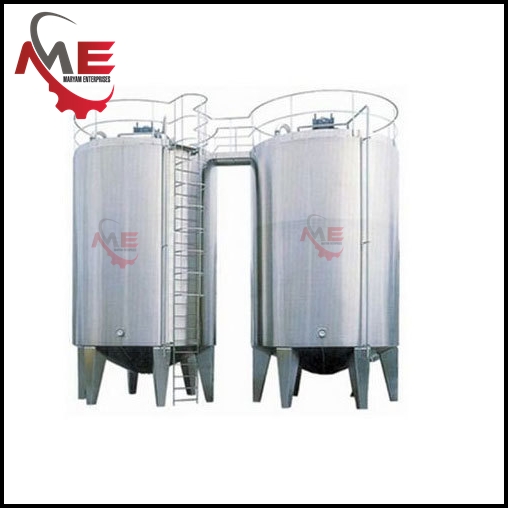Butter Processing Plant
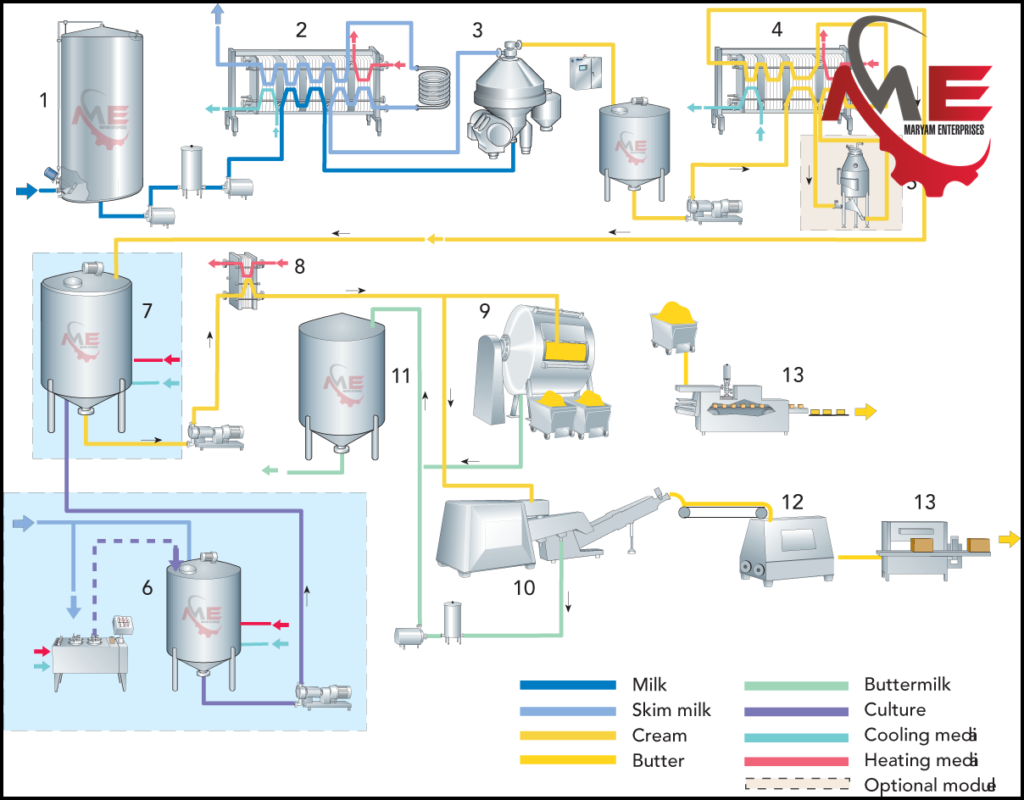
BUTTER PROCESSING PLANT
Butter a water-in-oil emulsion, comprised of >80% milkfat, but also containing water in the form of tiny droplets, perhaps some milk solids-not-fat, with or without salt (sweet butter); texture is a result of working/kneading during processing at appropriate temperatures, to establish fat crystalline network that results in desired smoothness (compare butter with melted and recrystallized butter); used as a spread, a cooking fat, or a baking ingredient.
The principal constituents of a normal salted butter are fat (80 – 82%), water (15.6 – 17.6%), salt (about 1.2%) as well as protein, calcium and phosphorous (about 1.2%). Butter also contains fat-soluble vitamins A, D and E.
Butter should have a uniform colour, be dense and taste clean. The water content should be dispersed in fine droplets so that the butter looks dry. The consistency should be smooth so that the butter is easy to spread and melts readily on the tongue.
Overview of the Buttermaking Process
Butter Churner
MARYAM ENTERPRISES is a leading and well known manufacturer of Butter Churner and complete milk plants and dairy plants. A butter churner is used to convert cream into butter. This is done through a mechanical process, frequently via a pole inserted through the lid of the churn, or via a crank used to turn a rotating device inside the churner.
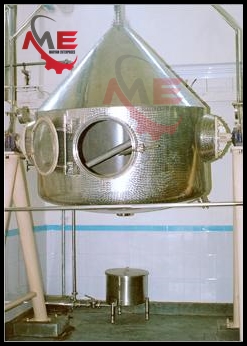
Milk Plant falling film evaporator
MARYAM ENTERPRISES is a leading and well known manufacturer of falling film evaporator and complete milk plants and dairy plants. The falling film evaporators have many advantages over submerged tubes evaporators. In the past, the vertical tubes evaporators were considered as most efficient but now they have been replaced by falling film evaporators due to its distinctive nature of operation. Our falling film evaporator is specifically suited to process your products with a low viscosity and a low tendency for fouling. It consists of a tube bundle crowned by a proprietary liquid distribution device that ensures an efficient and uniform distribution of the liquid to all the tubes. Your product flows as a continuous film along the tube length, driven by gravity. Usually the liquid and the vapors formed flow co-currently from the top to the bottom and are separated in a gas-liquid separator installed at the end of the tube bundle.


